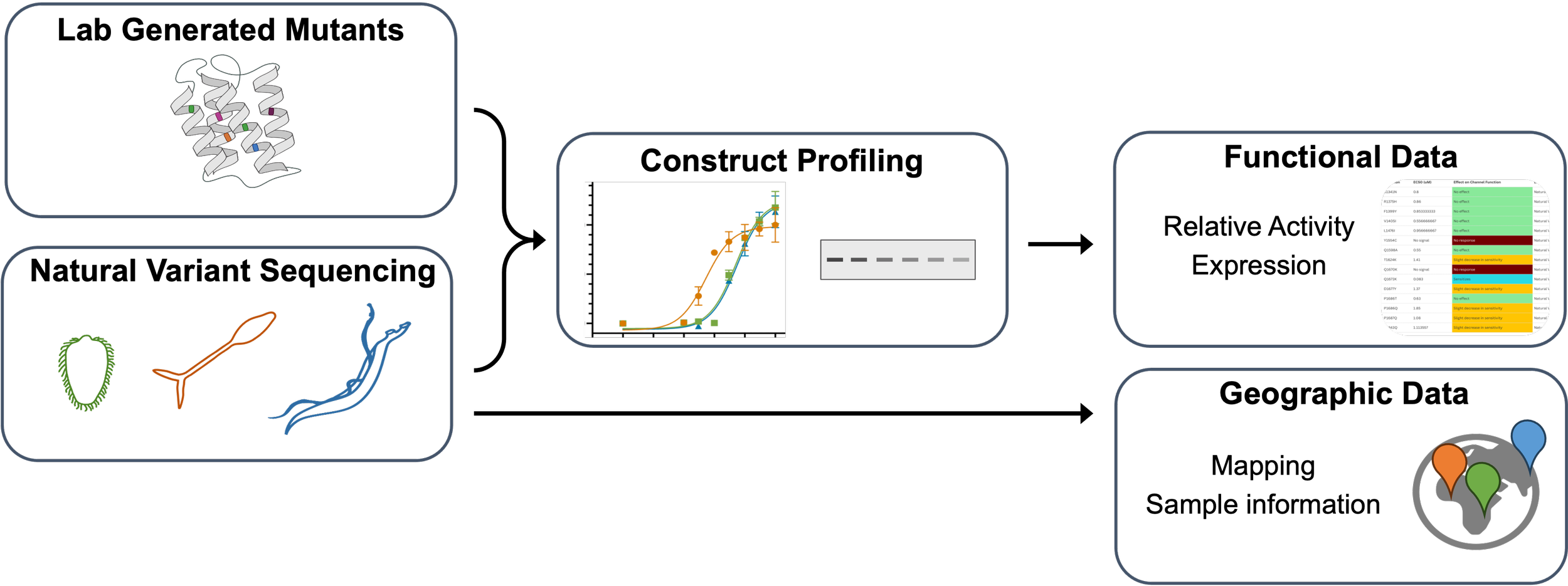About
The drug praziquantel (PZQ), discovered in the 1970s, is an essential medication for
combating diseases caused by parasitic flatworms. PZQ is the therapeutic mainstay for
the treatment of schistosomiasis, a socioeconomically devastating infection
caused by flatworms of the Schistosoma genus that afflicts ~260 million people
worldwide. Overall, the disease burden of schistosomiasis encumbers LMIC
economies with an annual loss of 70 million disability-adjusted life years.
The WHO classifies PZQ as one of the 100 essential medications used worldwide,
requiring over 50 million tablets globally for treatment every year.
Although PZQ has been used clinically for over 40 years, the mechanism of action has remained elusive. In 2019, the Marchant Laboratory identified a putative target for the drug, a transient receptor potential ion channel in the melastatin subfamily, named TRPMPZQ. While variation within the channel sequence may not affect PZQ action, some variant residues may impair PZQ action and potentially treatment efficacy. If such variants occurred de novo in natural schistosome populations or emerged in response to selection pressure evoked by mass drug administrative campaigns, resistance to PZQ as the sole clinical therapy may occur.
TRPtracker workflow




